As part of the Mayo Communities Caring for Water programme we ran a series of Citizen Science Stream Index (CSSI) Courses during the week of 4th April 2022. The CSSI method is a simplified macroinvertebrate index of stream condition. It uses just six main groups of invertebrates – comprising three ‘good guys’ i.e. sensitive to pollution and three ‘bad guys’ that are generally tolerant to at least some pollution. It was developed by Dr Simon Harrison of UCC.
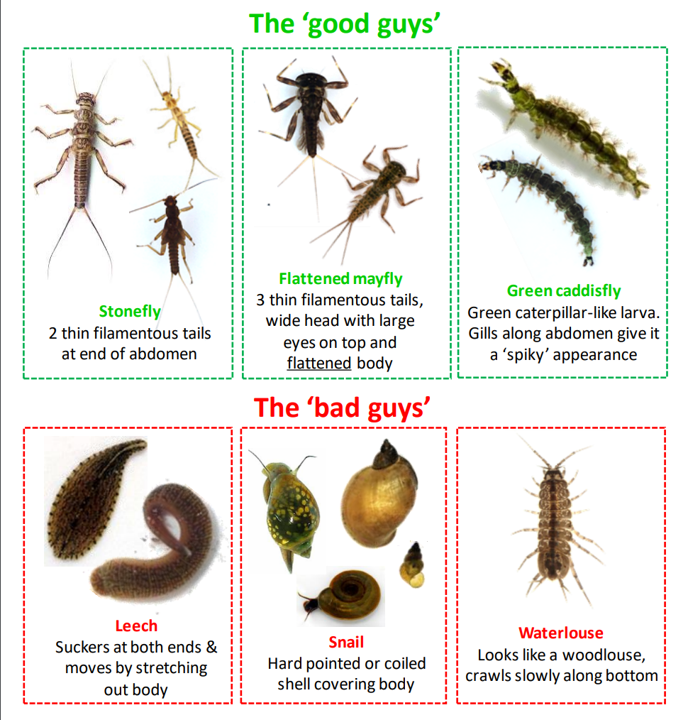
Four locations were selected around the county: Louisburgh, Straide, the upper Carrowbeg River and the Castlebar River at the Museum of Country Life.
Bunowen River Louisburgh (4 April 2022)
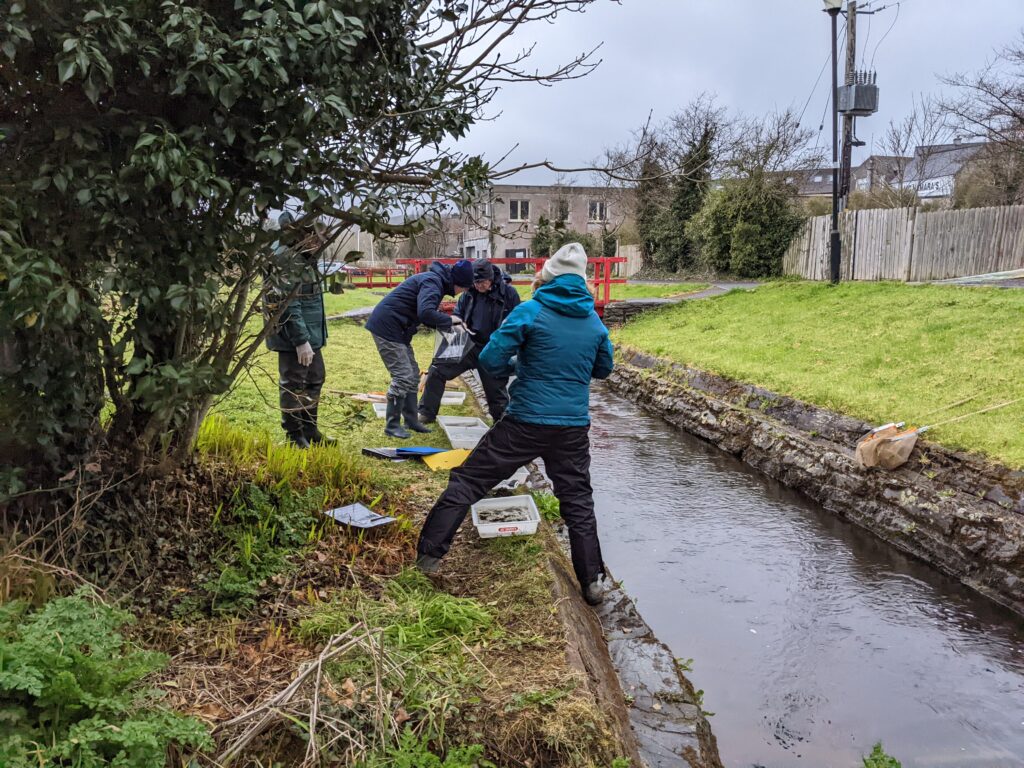
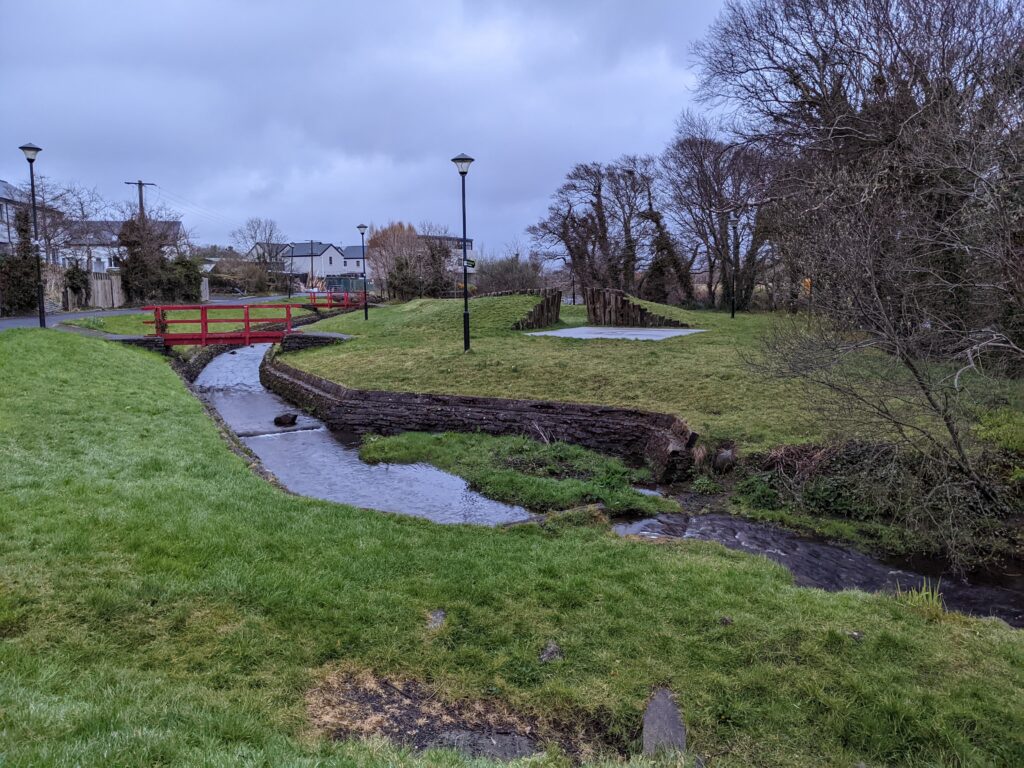
We sampled the side-stream around the island just upstream of the main bridge over the Bunowen River in Louisburgh, and also a sample from the main channel.
To our surprise we noted a fairly major pollution problem. Floc from the local water treatment plant appears to have been dumped into a section of the stream bookended by sand bags and a sluice board.
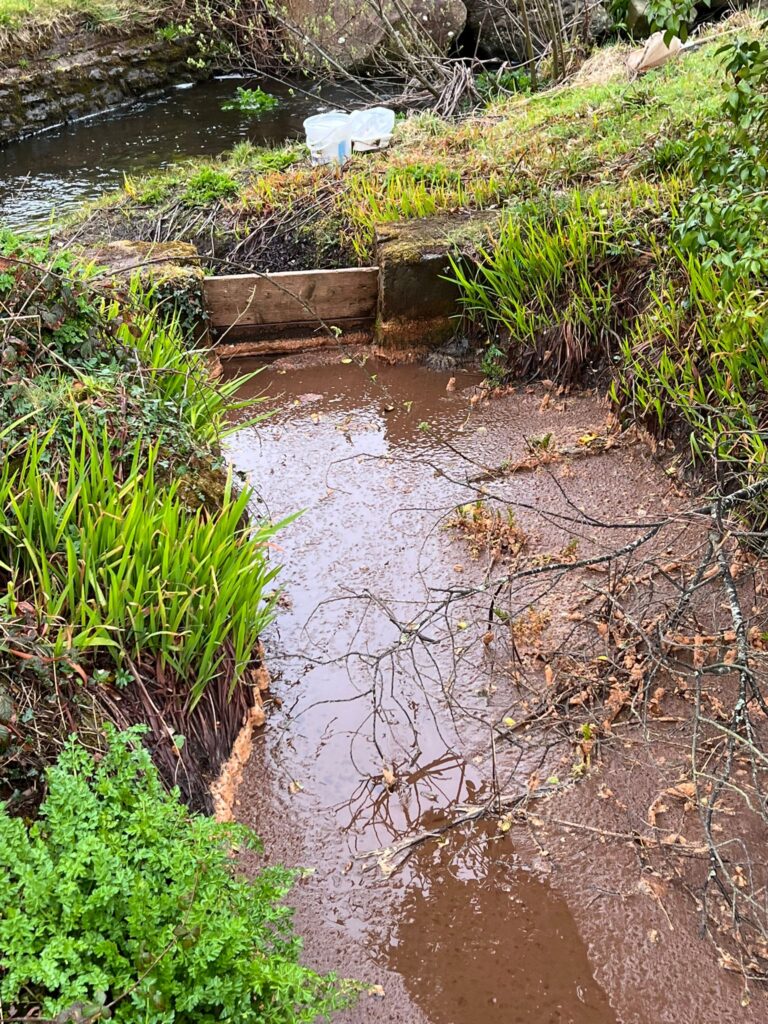
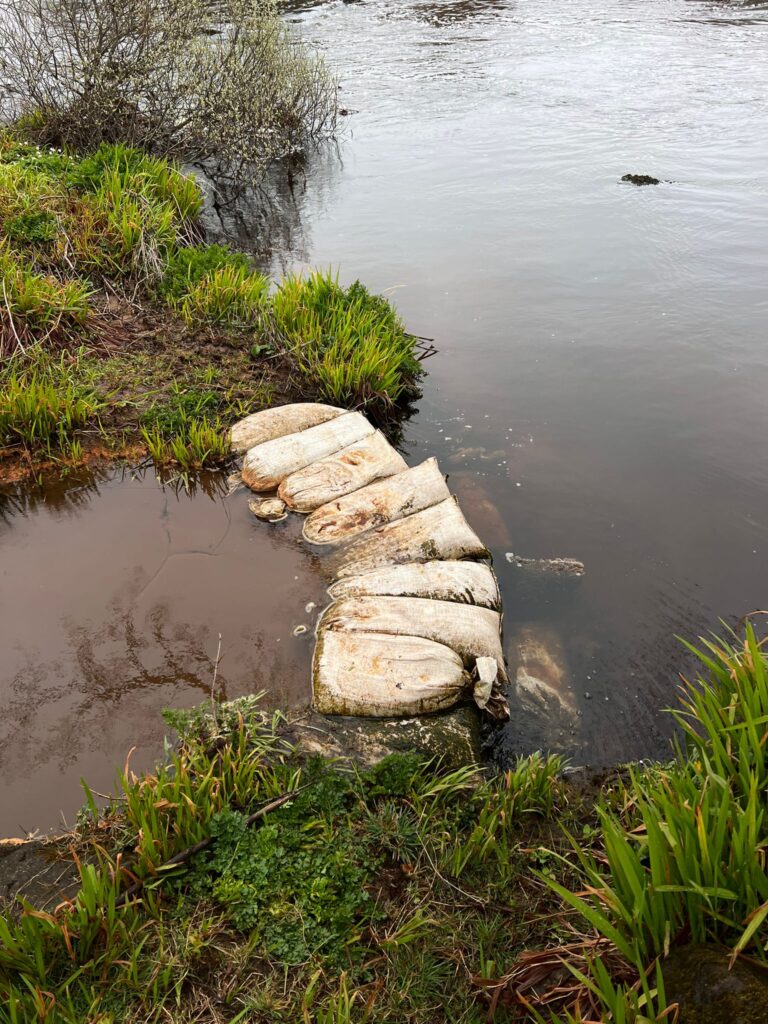
The CSSI samples taken upstream of this point gave much better scores than any taken downstream both in the side-stream and the main Bunowen River. The CSSI method works! To find this pollution on a casual visit also demonstrates that citizen scientists can produce useful data.
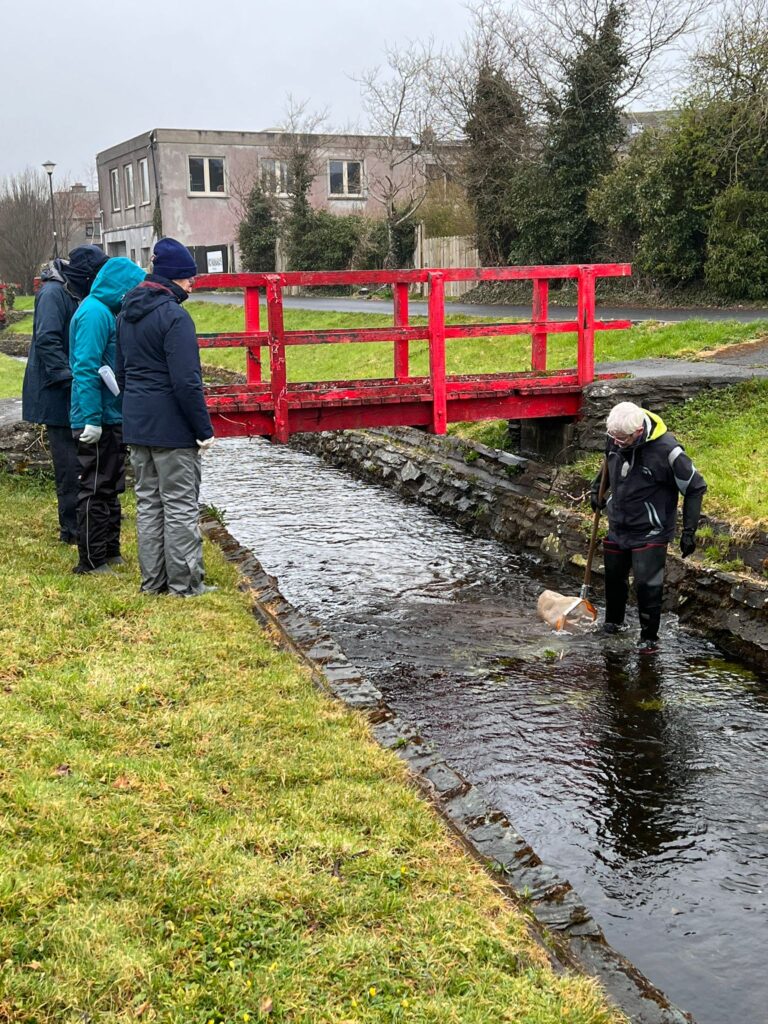
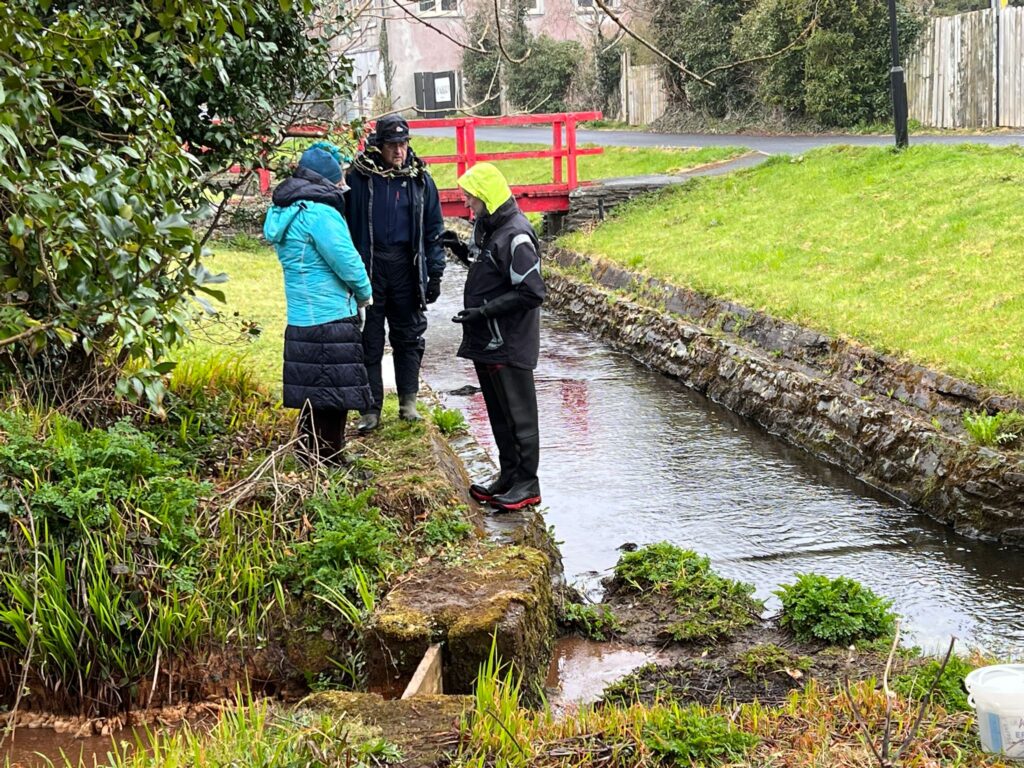
Straide River, 5 April 2022
The second course was run in Straide next to the Michael Davitt Museum.
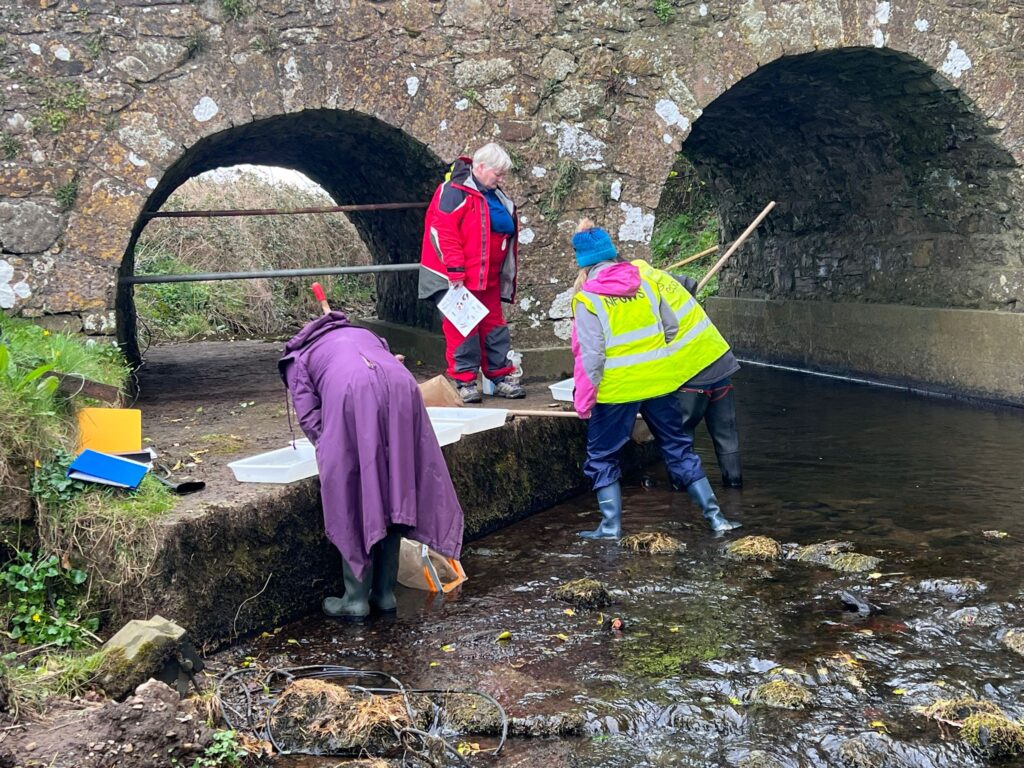
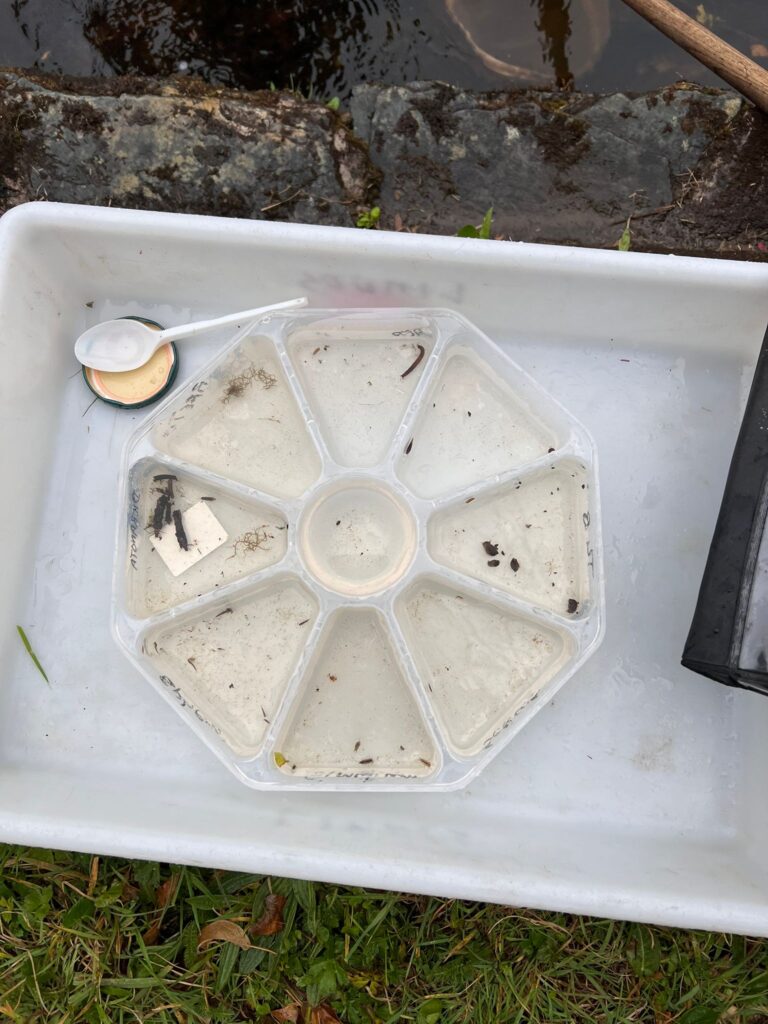
The Straide River had a nice mix of macroinvertebrates but also showed some signs of stress with water louse, snails and leeches present. There were a remarkable number of large cased caddis larvae.
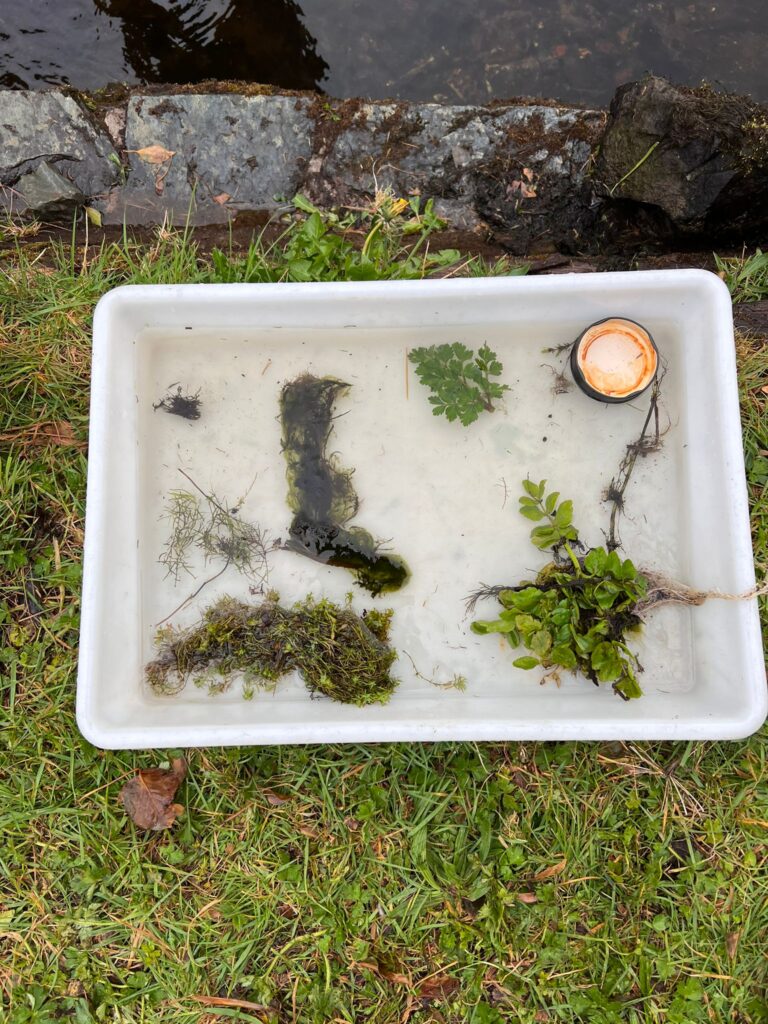

Upper Carrowbeg Catchment 6 April 2022
The weather was against us on Wednesday! Nonetheless we got a good set of samples from the Carrowbeg River.
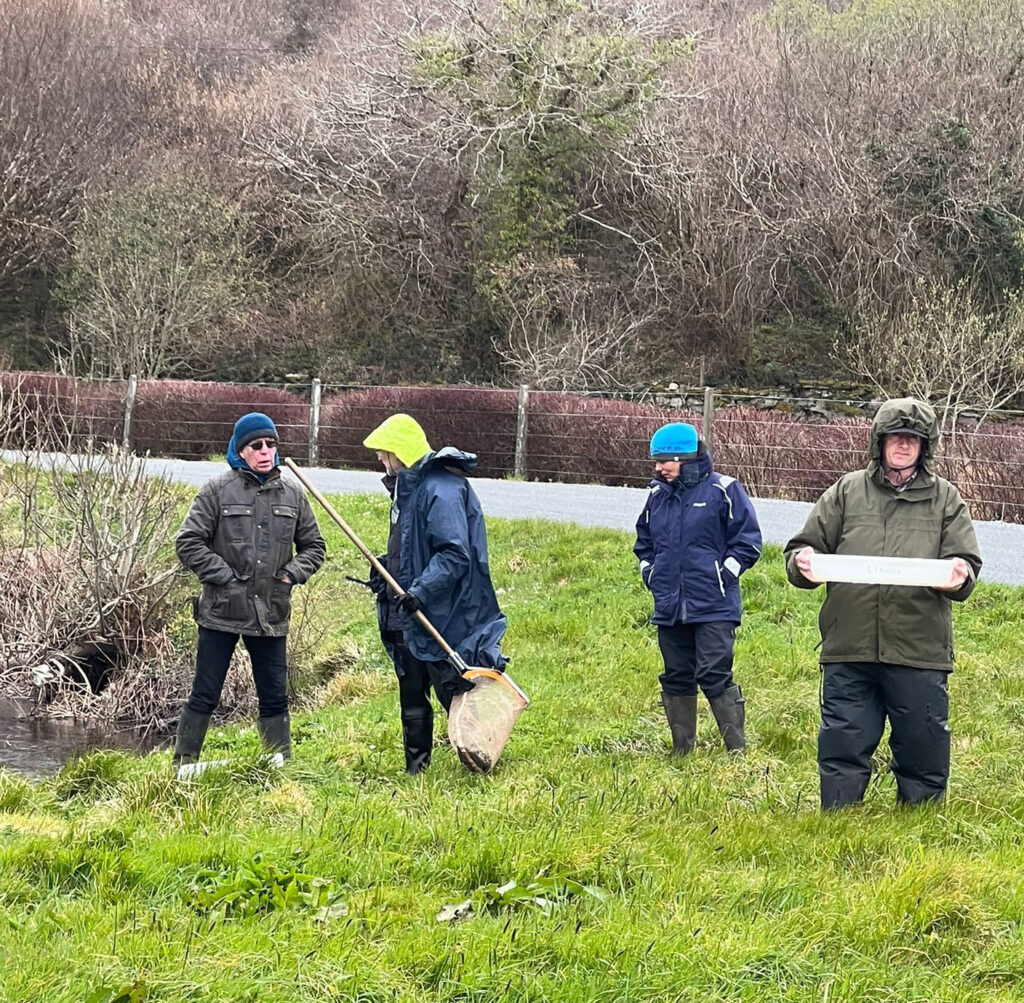

We found many flattened mayflies and also lots of stoneflies indicating that the river here is in pretty good condition.
We also tested the new smartphone App “AquaInverts” that has been developed under the auspices of Oriel River Catchments and Coastal Association (ORCCA) in County Louth – this was an output of the earlier Louth community water training programme.
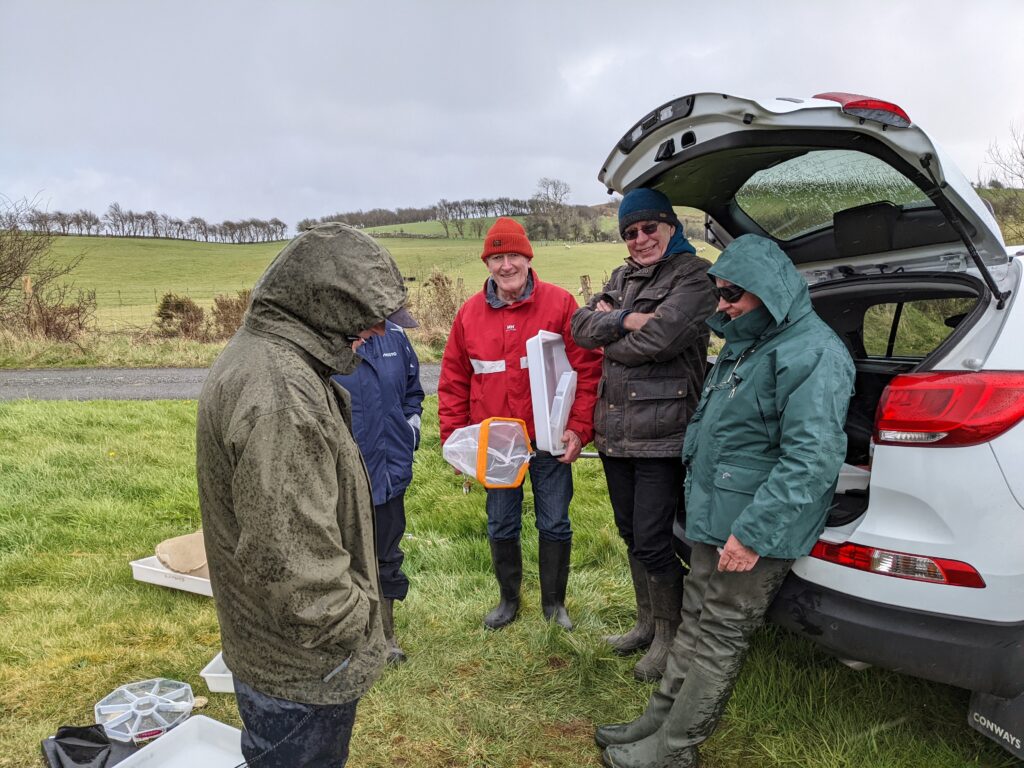
Castlebar River 9 April 2022
We had a big group on Saturday morning 9 April and the beautiful sunny weather helped! As on every course we covered health and safety, working near or in water. Transport of invasive species from one site to another, or introduction of diseases such as crayfish plaque were discussed and the remedy being clean dry nets, boots,, trays or the use of disinfectants such as Milton or Virkon, especially if moving from one site to another over the course of a day and it’s not possible to dry your equipment.
After a demo of how to take a kick sample everyone took a sample and put them out on the white trays to examine the macroinvertebrates.

The field sheet shows the six main groups of interest and we had additional photographs of a wider range of macroinvertebrate types. It doesn’t take too long to “get your eye in” and to be able to identify the main groups of interest. We scored each sample and found that the Castlebar River here at the Museum is in quite good condition. Once again we tested the “AquaInverts” App as described above.
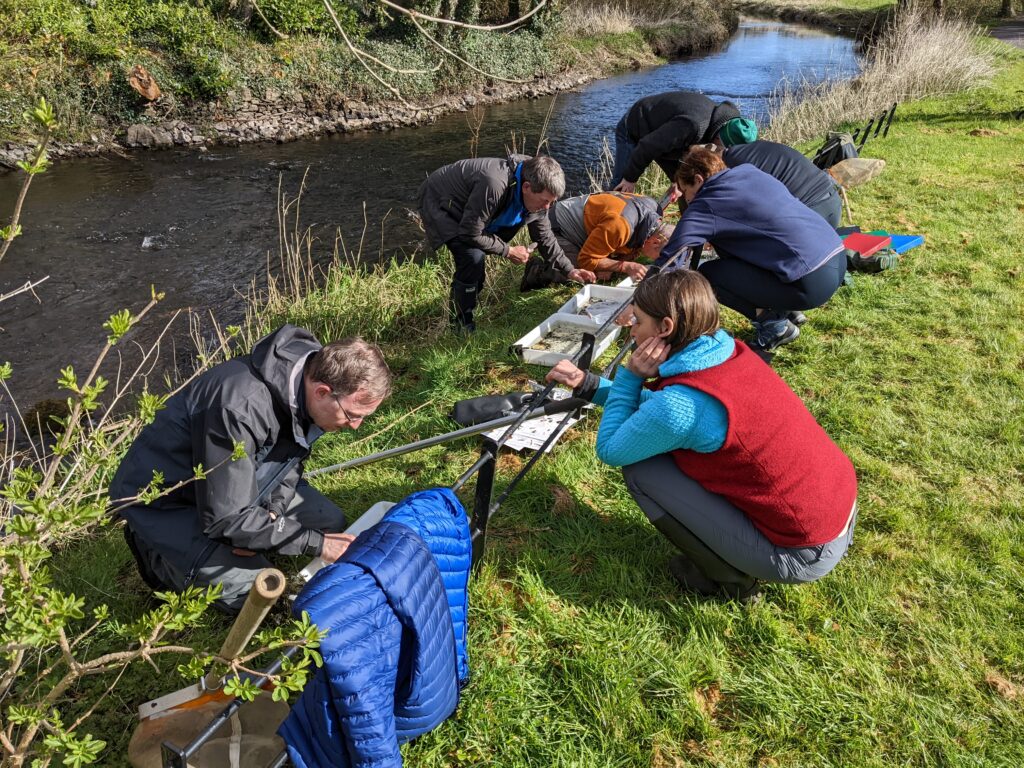
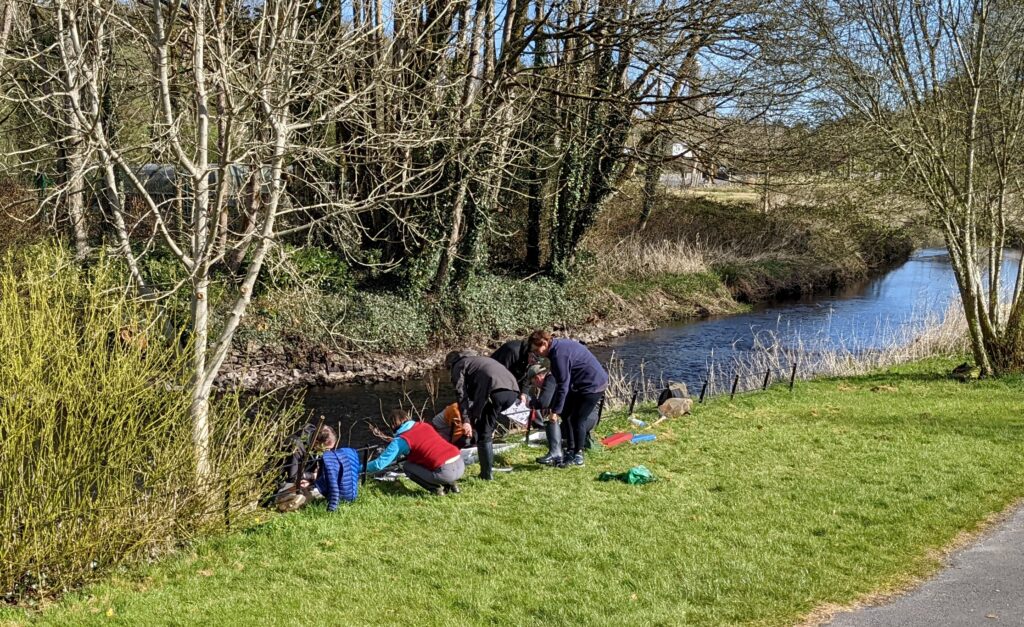
We explained the history of the Castlebar River – it was very badly polluted in the 1970s and early 1980s. When the modern secondary treatment sewage works was installed (early-mid 1980s) quality improved with the gross organic pollution no longer an issue but it then became highly eutrophic due to the nutrients in the treated effluent – with massive amounts of blanket weed algae covering the river bed. Phosphorus removal was eventually turned in the plant on and some 10 tonnes of phosphorus is now removed from the discharge on an annual basis. The algae was significantly reduced and Lough Cullen downstream was also improved. The final step was to block off the storm overflows in the town and now the river is at Good status.
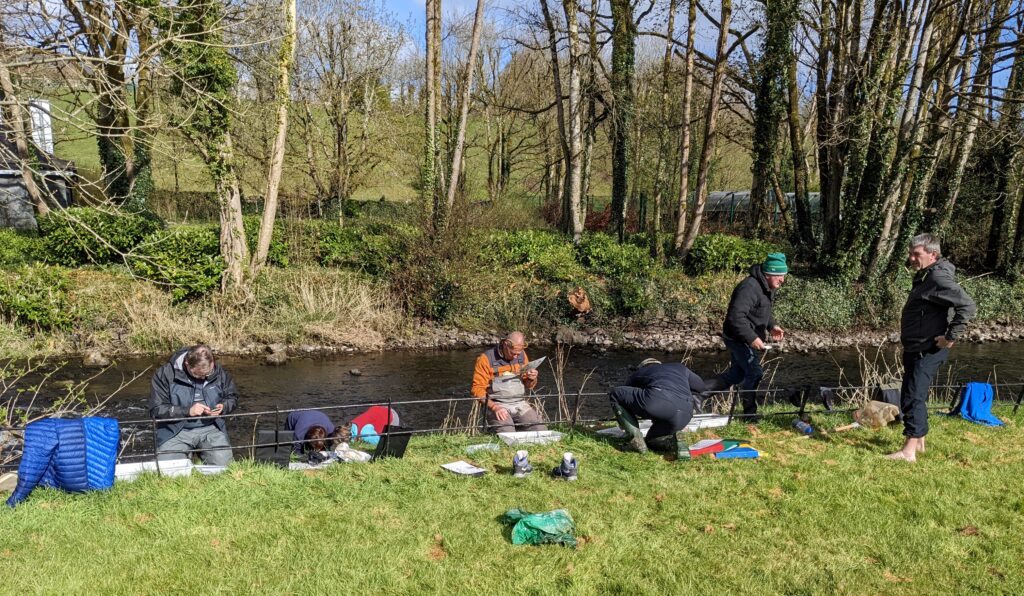
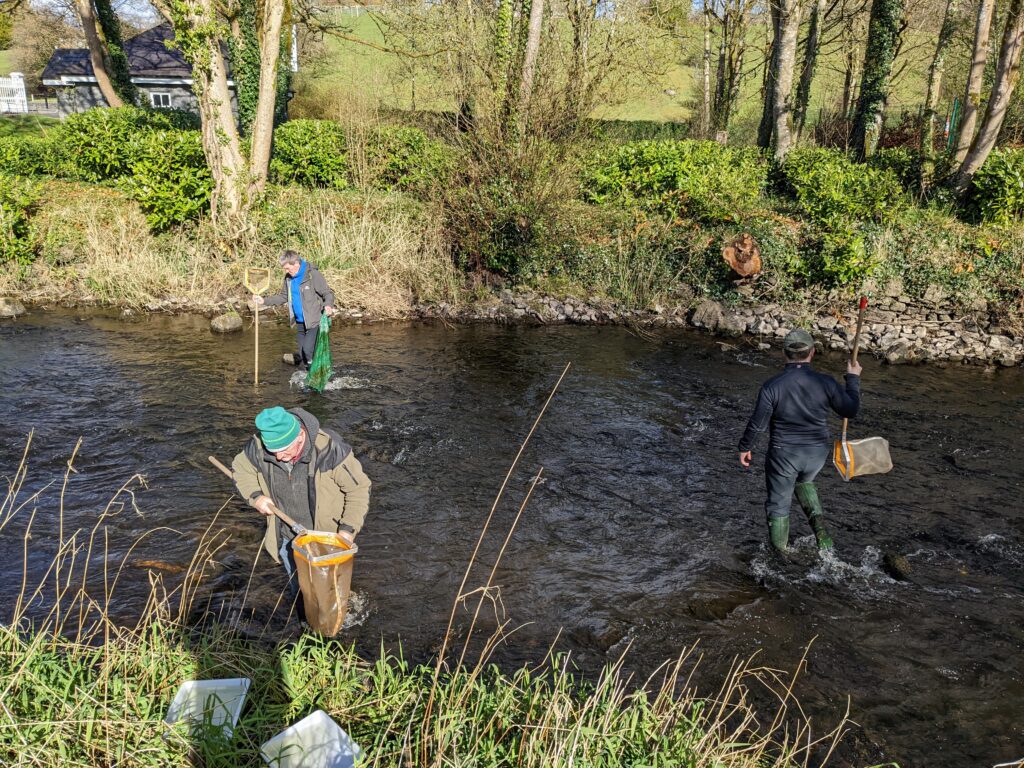
What is interesting is that we found the empty shells of long-gone ramshorn snails that were once abundant here when it was badly polluted decades back. Environmental Archaeology of a sort!
We discussed sampling strategies using the CSSI method. One approach is to sample a local stream a number of times a year at a convenient spot and compare results over time. An alternative is to take a larger number of samples throughout a catchment at accessible locations and compare the results across the catchment. This latter approach has the advantage that while we have ~77,000 km of river channel, only 13,000 km or so is sampled regularly by the EPA and local authorities with the remainder being small 1 to 2 m wide streams. Citizen scientists can help in filling the gap with sweeps through local catchments. The AquaInverts app will help too in storing the results and transmitting to official bodies such as Biodiversity Ireland or the EPA and IFI.
Ken Whelan has purchased sampling kits suitable for CSSI and will pass them on at cost to any group that wants to actively sample their local rivers.